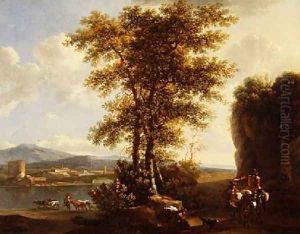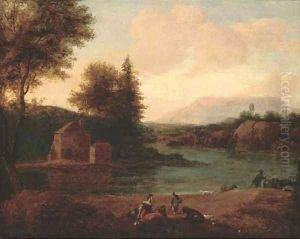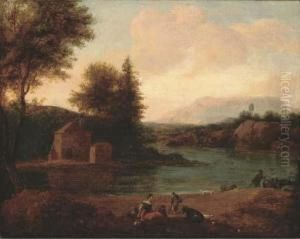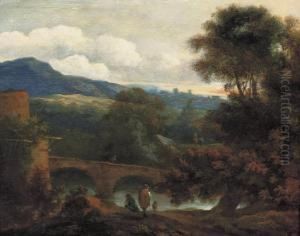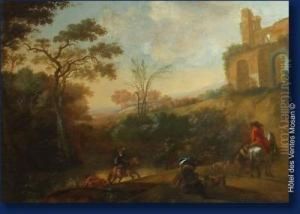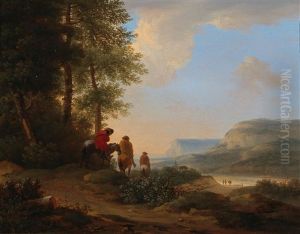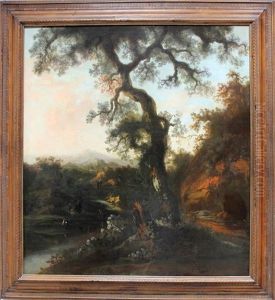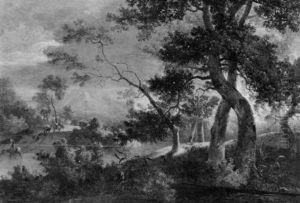Lodewyck van Ludick Paintings
Lodewyck van Ludick, also known as Ludovicus Neefs, was a Dutch Golden Age landscape painter, born in 1629, whose work mainly consisted of Italianate landscapes and nocturnal scenes with architectural structures. Although not as widely recognized as some of his contemporaries, van Ludick's works display a keen attention to detail and a mastery in depicting light and shadow, which was a hallmark of Dutch landscape painting during this period.
Van Ludick was likely born in the Netherlands, though details about his early life and training are scarce. It is believed that he was influenced by the works of other Dutch Italianate painters, a group of artists who incorporated Italian scenery and warm light into their Dutch landscapes, reflecting the influence of their travels to Italy or their desire to emulate the Italianate style that was popular at the time.
Unfortunately, there is limited information regarding Lodewyck van Ludick's career and personal life. He is known to have created several nocturnal scenes, a genre that was particularly appreciated in the 17th century for its dramatic use of light and shadow to create mood and atmosphere. Van Ludick's nightscapes often included architectural features such as churches or classical ruins, illuminated by the soft glow of the moon or artificial sources of light, such as torches or lanterns.
Despite his evident skill, van Ludick did not achieve the level of fame enjoyed by some of his peers, and as a result, his works are less commonly found in major museum collections. Records suggest that he was active as an artist until at least 1683, after which little is known about his life. The date and circumstances of his death remain unclear, and the art historical record does not provide a definitive year when he passed away. Nevertheless, Lodewyck van Ludick's surviving paintings contribute valuable insight into the diversity of Dutch landscape painting and the fascination with light that characterized the era.
